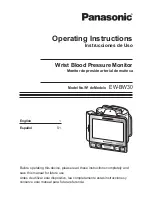
IQ DP-4000
SECTION 5 - PROGRAMMING THE IQ DP-4000
TD 17548B
26
5.11 VAR/POWER FACTOR SIGN CONVENTION
SETPOINT
This setpoint selects the sign convention (+ or -) for the
Var and the Power Factor values. The sign conventions
can be either negative or positive.
•
A negative sign convention corresponds to:
-
Inductive Load = Negative Var and Power
Factor Values (Lagging Power Factor)
-
Capacitive Load = Positive Var and Power
Factor Value(Leading Power Factor)
•
A positive sign convention corresponds to:
-
Inductive Load = Positive Var and Power Factor
Values (Lagging Power Factor)
-
Capacitive Load = Negative Var and Power
Factor Values (Leading Power Factor)
Power engineers typically use the positive sign
convention as the standard convention; the negative
sign convention is mathematically correct.
Figures 3.2 and 3.3 illustrate the two Var and Power
Factor sign conventions.
S2.6
setting for Rotary Select Switch position
S3.5
:
(Set all 8 S2 switches).
•
OFF position for a negative sign convention
•
ON position for a positive sign convention
5.12 ALARM FUNCTIONS - GENERAL
The DP-4000 has two independent alarms, Alarm 1 and
Alarm 2. The faceplate of the IQ DP-4000 has two
LEDs to indicate the state of each of these alarms. A
“steady-on” LED indicates an active alarm. If the
optional I/O module is installed, the relays will change
state when the corresponding alarm LED is illuminated.
Both of the alarms have the features outlined in Table
5.C (p.22).
5.12.1 Relay Modes Alarm Setpoint
This setpoint is used only if the IQ DP-4000 is equipped
with the optional I/O module. Select one of two different
alarm relay reaction modes in response to a number of
operating conditions. These are:
•
Mode 1. Alarm relay is de-energized normally and
energizes during an alarm condition
•
Mode 2. Alarm relay is energized normally and de-
energizes during a loss of AC control power
You must select one of these two modes for each
alarm. Your choice depends on the desired effect of an
AC power loss on an application, as described in
Paragraph 5.12.13 (p.29). See Table 5.I for setting the
alarm modes for the relays.
5.12.1.1 Mode 1
When alarm mode 1 is selected, the alarm relay will
energize only on an alarm condition. The alarm relay is
in the de-energized state:
•
When the IQ DP-4000 is not powered
•
During normal operation, with no alarms active
(the corresponding Alarm LED is not “steady-
on” when viewing from the faceplate)
During
normal operation
, when the alarm relay is in
the de-energized state, the
normally-closed contacts
are closed
.
When an alarm occurs, the normally-closed contacts
open, and the normally open contacts close. The
advantage of this mode of operation is that if a failure of
the IQ DP-4000 occurs (a loss of power), the relay will
remain in the same state, as if no alarms are active.
Note:
It is your responsibility to choose the NO/NC
pair of Alarm Relay contact to perform the desired
operation.
5.12.1.2 Mode 2
When alarm mode 2 is selected, the alarm relay will
energize after initial power up and de-energize on a trip
condition. The alarm relay is in the energized state. This
occurs when:
•
After the normal AC power-up sequence
•
During normal operation, with no alarms active (the
corresponding Alarm LED is not “steady-on” when
viewing from the faceplate)
During
normal operation
, when the alarm relay is in
the energized state, the
normally-closed contacts are
open
.
When an alarm occurs, the normally-closed contacts
close, and the normally-open contacts open.
The advantage of this mode of operation is that if a
failure of the IQ DP-4000 occurs (a loss of power), the
relay will change state, as if an alarm occurs.
Alarm 1
Alarm 2
Position
(Set all 8 S2 switches)
S3.6
S3.7
OFF for Mode 1
S2.1
S2.1
ON for Mode 2
Table 5.I Alarm Relay Mode Setting
Summary of Contents for Cutler-Hammer IQ DP-4000
Page 2: ......















































